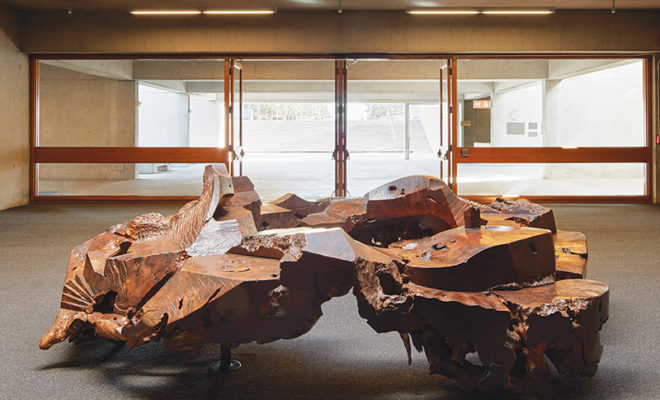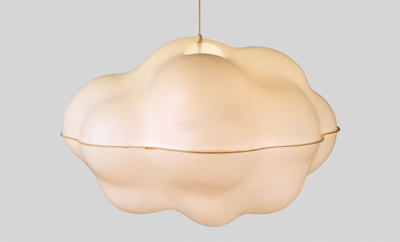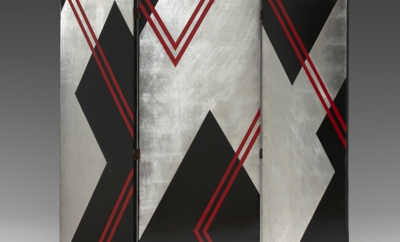 J. B. Blunk (1926–2002) THE PLANET Redwood 1969. OAKLAND MUSEUM OF CALIFORNIA/MATTHEW MILLMAN PHOTO.
J. B. Blunk (1926–2002) THE PLANET Redwood 1969. OAKLAND MUSEUM OF CALIFORNIA/MATTHEW MILLMAN PHOTO.
Exhibition
Curator’s Eye: J. B. Blunk’s The Planet
Few objects have useful lives once they enter museum collections. This one demands to be touched.
Legions of Bay Area schoolchildren begin their visit to the Oakland Museum of California at J. B. Blunk’s monumental redwood seating sculpture, The Planet. Commissioned in 1969, the piece was set in place even before the windows and doors of the museum were installed in the building, which opened that same year. Carved from a single old-growth burl and measuring roughly thirteen feet in diameter, the sheer scale of the sculpture dominates the surrounding space. The participatory nature of this astounding work of art continues to challenge and inspire us.
In the late 1960s, J. B. (James Blain) Blunk was a maverick artist living o the land in Marin County, making sculptural furniture that disregarded the line between art and craft. Before he arrived in Northern California, he had studied ceramics under Laura Anderson at UCLA. Upon graduation, Blunk had been drafted into the Korean War and he arranged to be discharged in Japan, where a chance encounter with Isamu Noguchi led to apprenticeships with the famed potters Kitaoji Rosanjin and Toyo Kaneshige. These transformational experiences and relationships set the course for his unique approach to art.
Blunk’s early commitment to the subtle and unobtrusive aesthetics of the Japanese stoneware tradition are evident in the way he transformed the tree that became The Planet. At this time in his practice, his primary tool was a chainsaw aided by chisels and grinders, yet he approached his material with the sensitivity of a potter. The sculpture feels and looks at once alive and complexly crafted. A hollow circle of smooth planed angles transition in and out of the natural curves and craggy ripples of the burl. The undersurface of angles, roots, and crevices rise o the floor as if the piece is levitating.
Each shifting section of The Planet encourages sitting around or inside the circle, facing in or out. Every divot and curve has been caressed by countless museum visitors. Very few objects have useful lives once they enter museum collections, but this extraordinary work demands to be touched, interacted with, and otherwise completed by visitors.
The Oakland Museum of California will celebrate The Planet and many of Blunk’s iconic works in a special exhibition titled J. B. Blunk: Nature, Art & Everyday Life, opening April 21, 2018.












